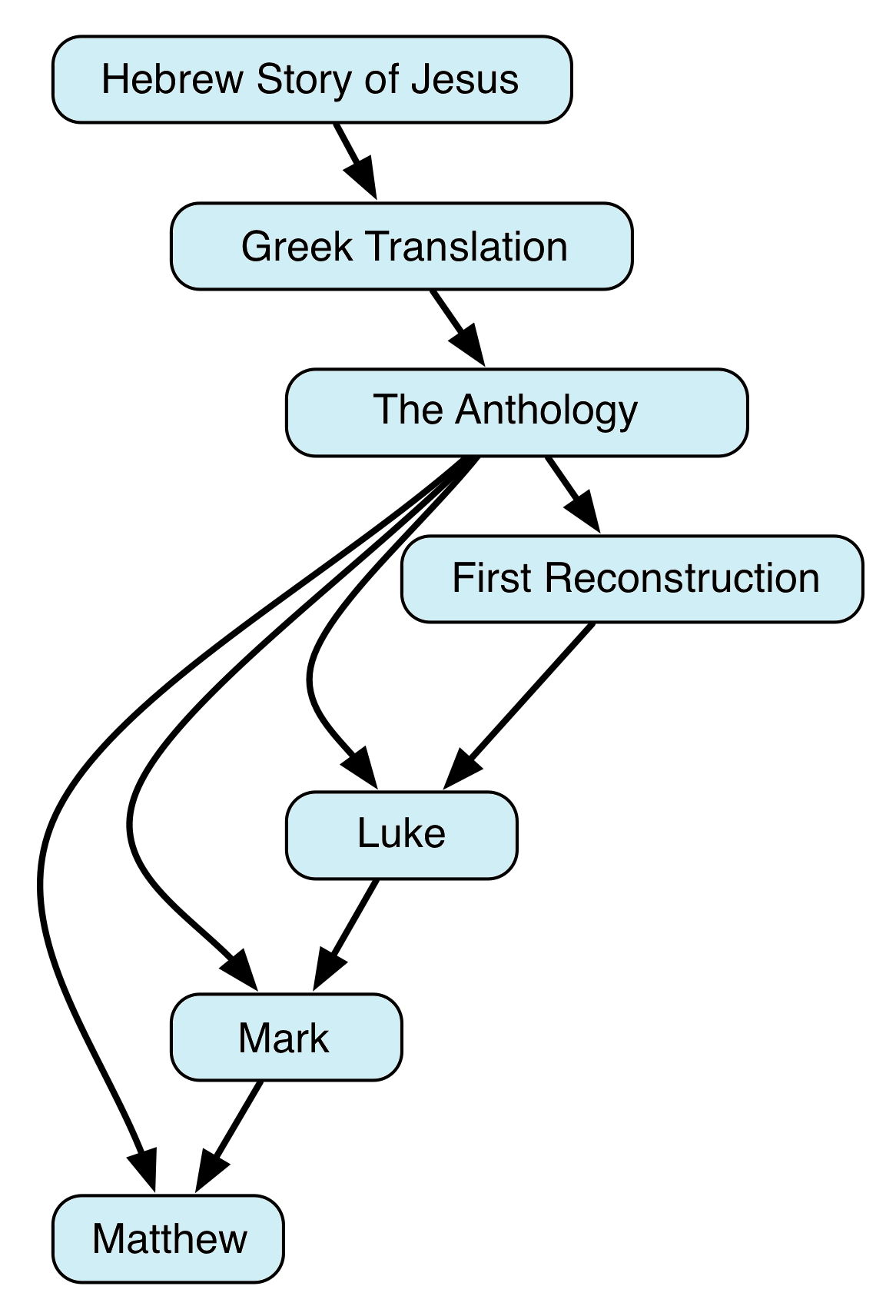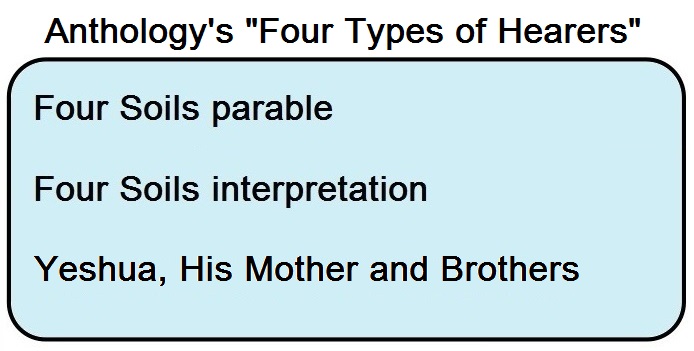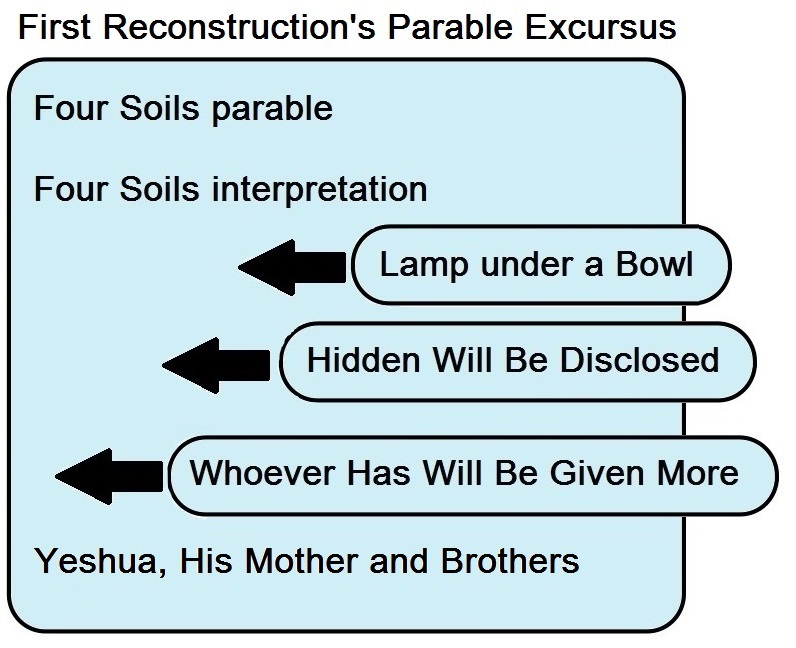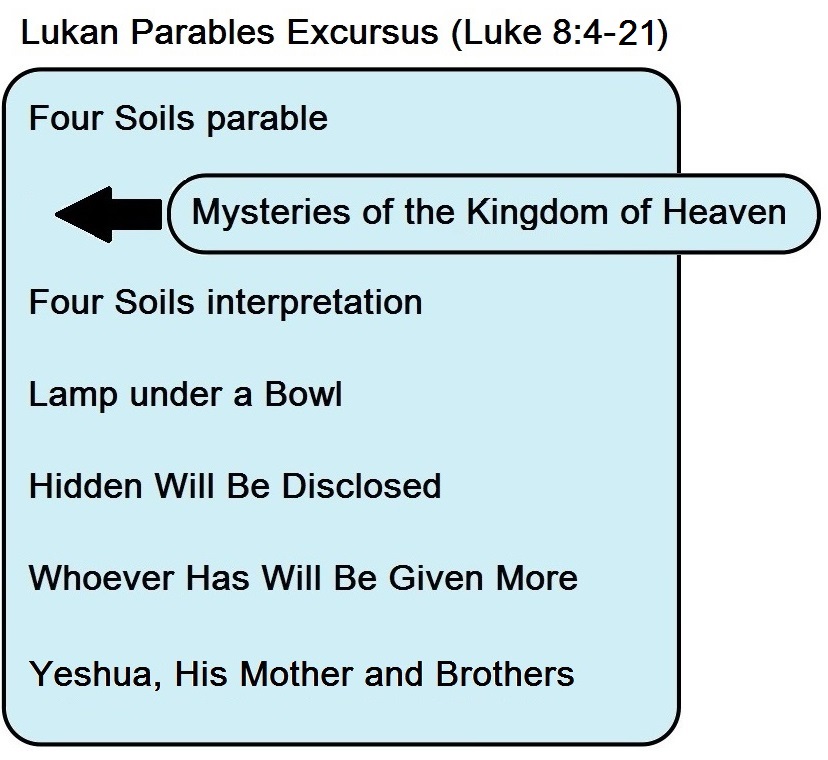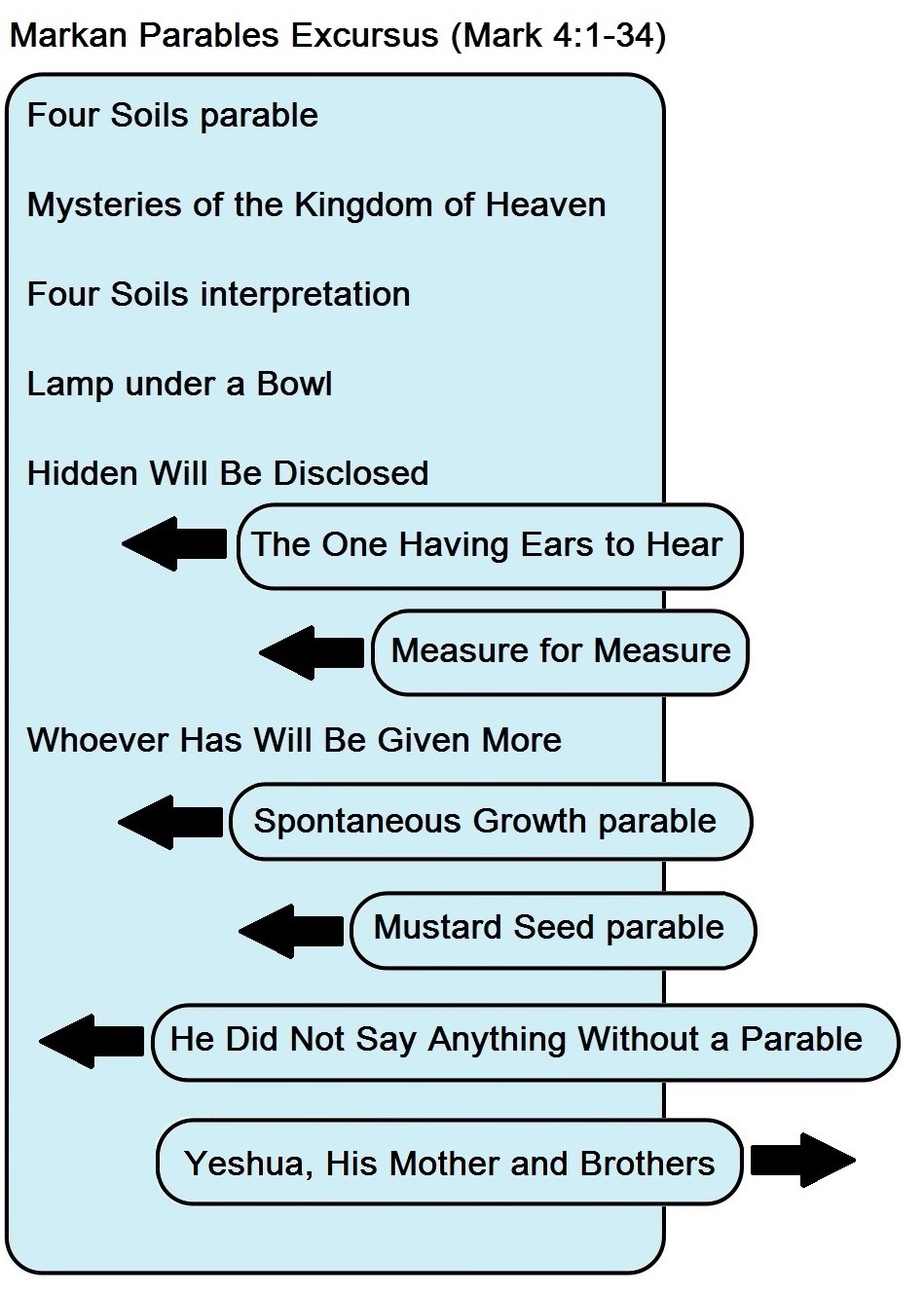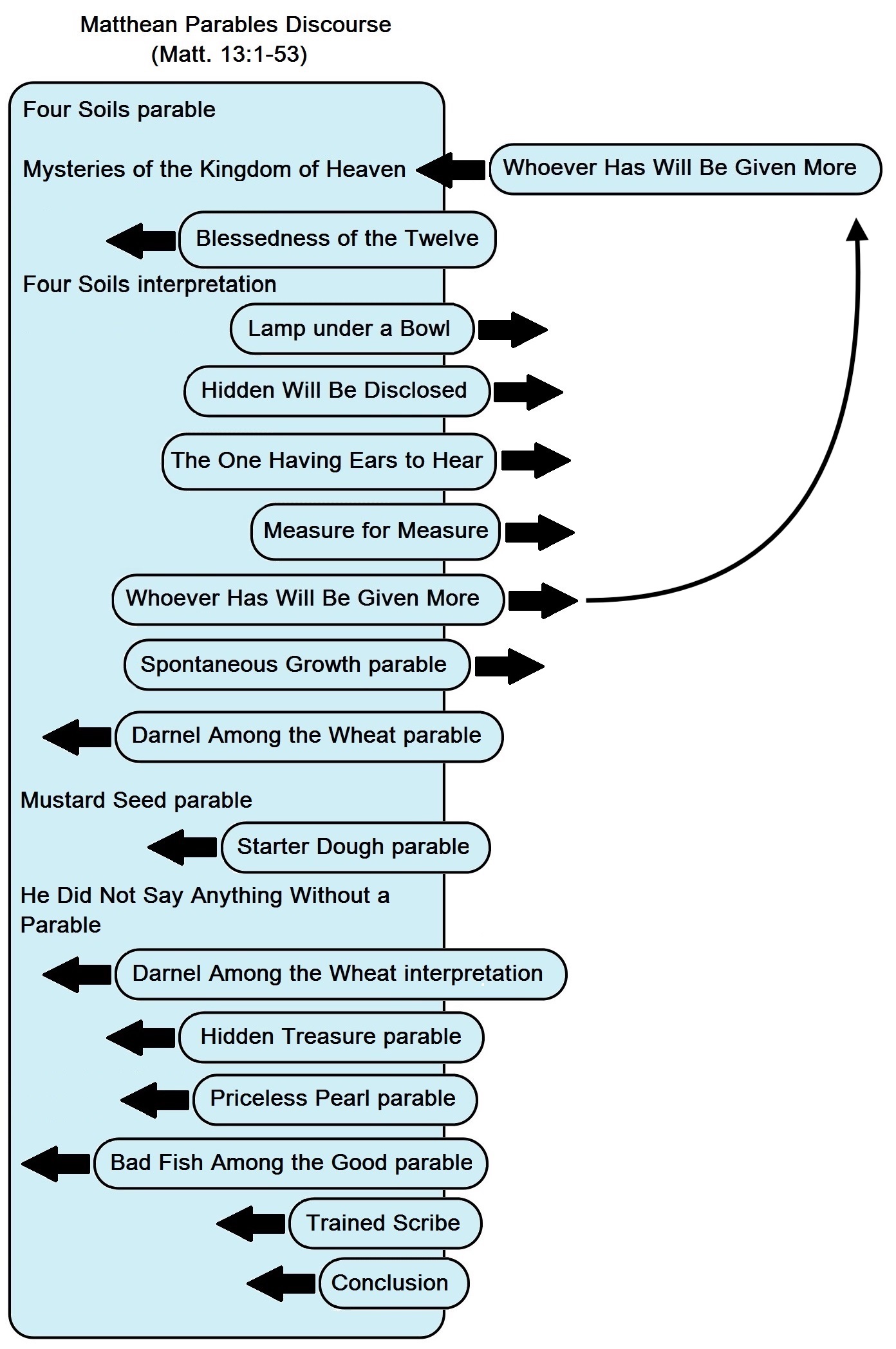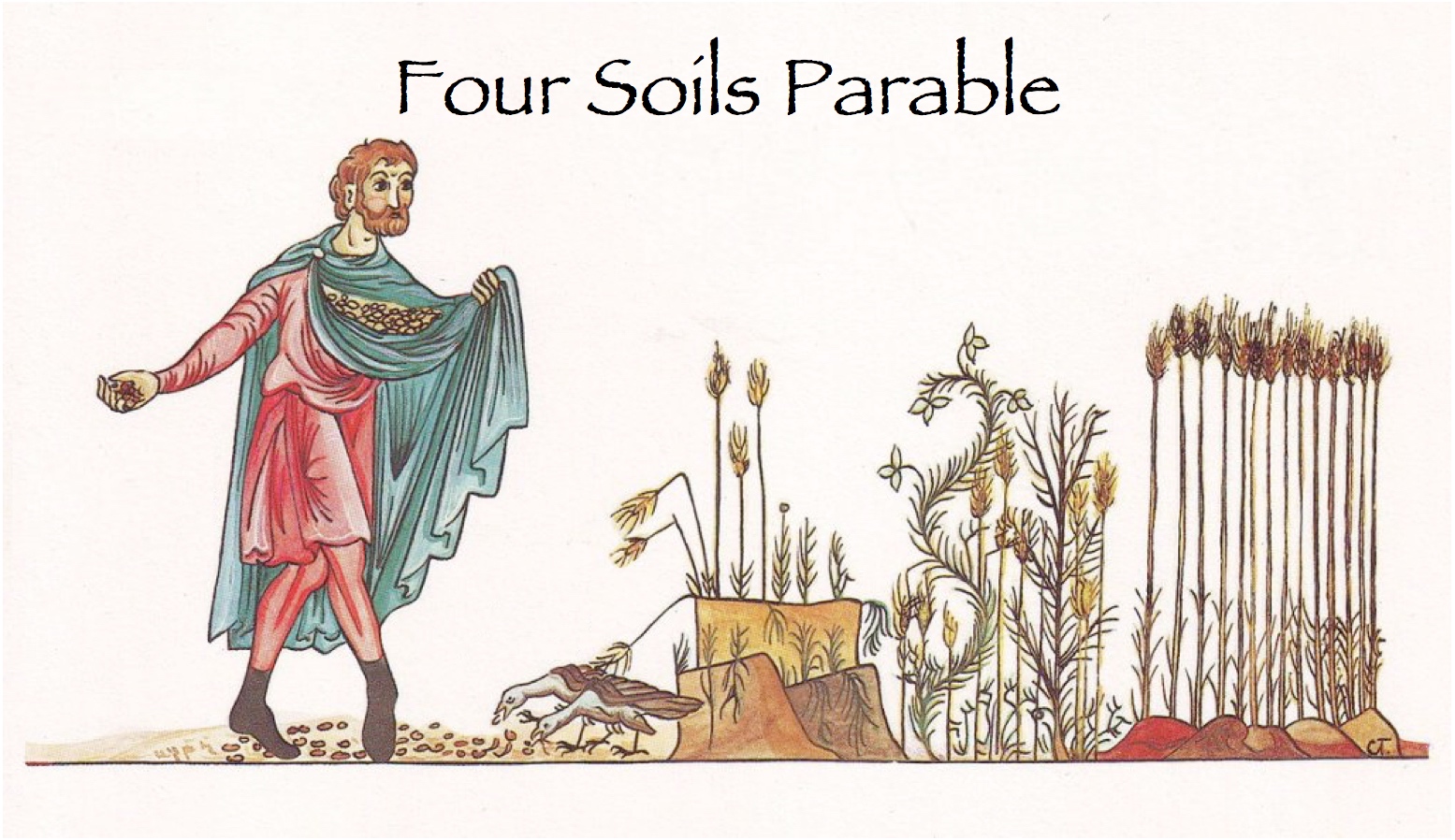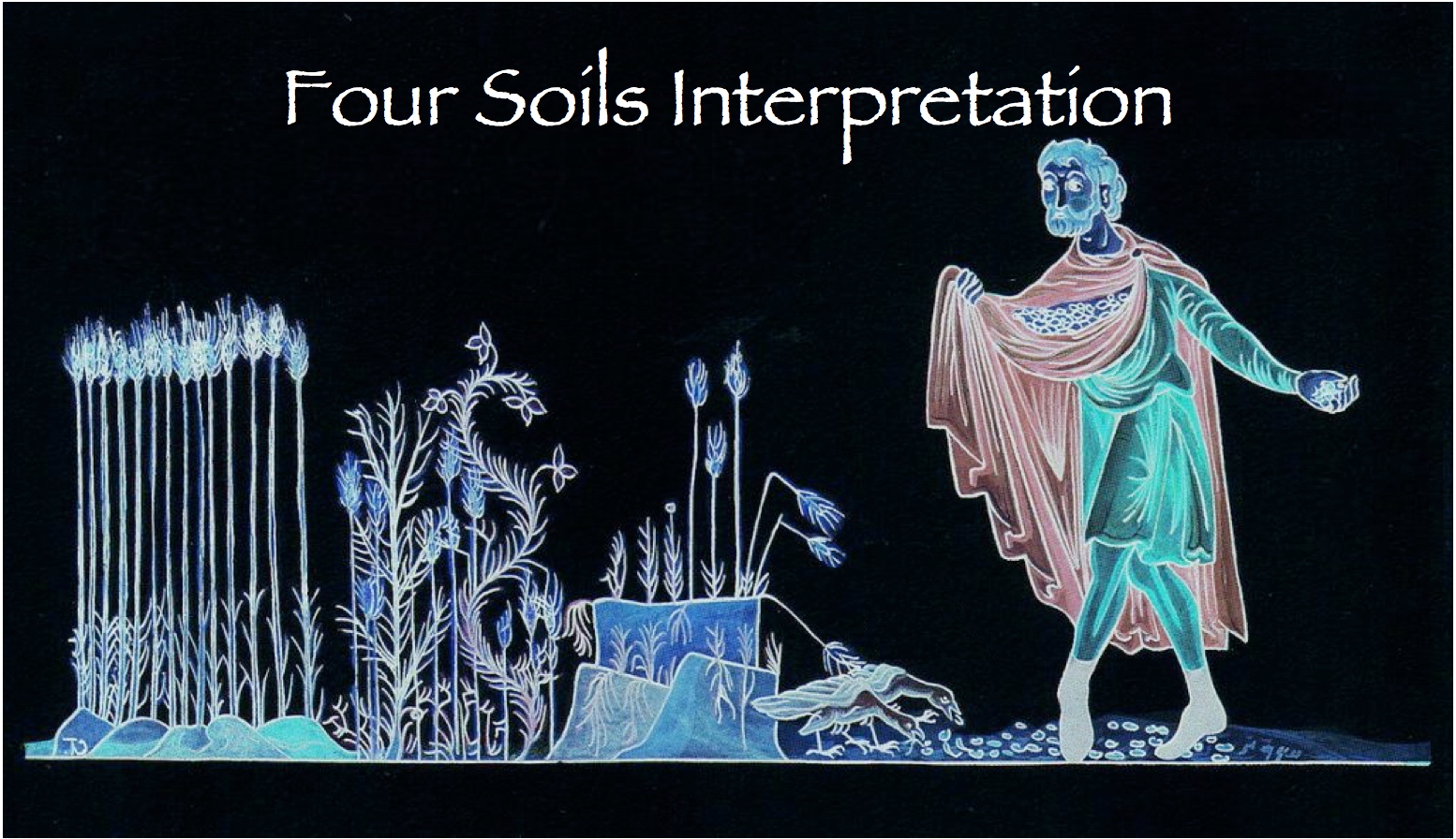Updated: 24 January 2024
In his book Jesus, Rabbi and Lord,[1] Robert Lindsey proposed that the Four Soils parable originally belonged in a narrative-sayings complex that consisted of the following pericopae:
- Yeshua, His Mother and Brothers (Matt. 12:46-50; Mark 3:31-35; Luke 8:19-21)
- A Woman’s Misplaced Blessing (Luke 11:27-28)
- Four Soils parable (Matt. 13:1-9; Mark 4:1-9; Luke 8:4-8)
- Four Soils interpretation (Matt. 13:10, 18-23; Mark 4:10, 13-20; Luke 8:9, 11-15)
- Houses on Rock and Sand parable (Matt. 7:24-27; Luke 6:47-49)
Lindsey believed that, by analyzing synoptic pericopae for common themes and distinctive vocabulary, it is possible to reconstruct literary complexes that once existed in the original Hebrew biography of Jesus (i.e., the Life of Yeshua). These complexes were characterized by narrative incidents that gave rise to teachings from Jesus and that concluded with illustrations (often in the form of twin parables[2] ) that drove home the point of Jesus’ lesson. In Lindsey’s view, these literary complexes that originated in the Hebrew Life of Yeshua remained intact in the Greek translation of this Hebrew biography, but they were subsequently broken apart by the Anthologizer, who separated teachings from incidents and parables from teachings and grouped the constituent parts according to genre.
We accept Lindsey’s premise that such narrative-sayings complexes can be reconstructed from the fragments that remain in the Synoptic Gospels, and many of the individual complexes Lindsey proposed are convincing.[3] However, we find this particular reconstructed complex containing the Four Soils parable to be faulty.
At first glance, Lindsey’s proposed complex containing the Four Soils parable appears to fit the literary pattern of complexes he described, with one major exception: intruding between the concluding illustrations is a teaching section in which Jesus interprets the Four Soils parable for his disciples. Otherwise, the complex consists of narratives (Yeshua, His Mother and Brothers; A Woman’s Misplaced Blessing), each of which contain an element of teaching, followed by two illustrations in the form of parables. But upon closer examination, the conformity of Lindsey’s proposed reconstructed complex to the literary pattern he outlined breaks down. Lindsey’s proposed complex contains two distinct narratives, both of which elicit a brief teaching from Jesus. Consequently, the narrative→teaching→narrative→teaching sequence of Lindsey’s proposed complex does not conform to the literary pattern Lindsey’s own hypothesis teaches us to expect. Moreover, while Lindsey maintained that the Anthologizer was in the habit of separating narratives from teachings and teachings from parables, he never suggested that the Anthologizer broke narrative units into smaller pieces. Therefore, the fact that Yeshua, His Mother and Brothers is not linked to A Woman’s Misplaced Blessing in any of the three Synoptic Gospels casts serious doubt on the theory that these two pericopae were ever united as a single narrative at any stage of Gospel transmission.
Another challenge to Lindsey’s reconstructed complex is the fact that all three Synoptic Gospels are clear that with the Four Soils parable Jesus opened an address to the crowds. In other words, there is no need to search for a narrative incident that could have led into a teaching discourse that included the Four Soils parable, since the Synoptic Gospels already provide the Four Soils parable with a narrative introduction.
A further difficulty with Lindsey’s reconstructed complex is the dissimilarity between the concluding illustrations. The Four Soils parable describes the fate of four groups of seed that landed in four different environments. In three of the environments the seed fails to produce a crop, but the seeds that fell on fertile soil produce a crop that more than compensates for the wasted seed at the time of sowing. The Houses on Rock and Sand parable, on the other hand, contrasts the fate of a house built on a rock with that of a house built on sand. The one house survives a storm, but the other collapses. Thus, in the Four Soils parable we have three failures contrasted with one success, while in Houses on Rock and Sand we have one success contrasted with one failure. The schemes are entirely different, the two parables share no distinctive vocabulary that might unite them, the two parables are addressed to different types of audiences, and the parables illustrate different points.[4] In other words, Four Soils and Houses on Rock and Sand do not meet any of the criteria that would identify them as twin parables.[5]

The Sower by Jean-François Millet (ca. 1865). Image courtesy of Wikimedia Commons.
Finally, Lindsey’s reconstructed complex does not explain why the Four Soils parable required an interpretation. If the Four Soils parable had been delivered as an illustration of Jesus’ teaching—as Lindsey’s reconstruction suggests—then the fact that the parable required interpretation is proof that the parable had failed in its purpose of illustration. Rather than illuminating Jesus’ teaching and providing it with a successful conclusion, the illustration itself had to be explained with additional teaching. On the other hand, if the Four Soils parable served not as the conclusion of a discourse, but as the opening of Jesus’ address to the crowds—as, in fact, the Gospels indicate—then the need for the parable to be interpreted was intentional. Jesus would have used the parable to capture the attention of the crowd, to draw them in and engage them in doing the very thing the parable itself was designed to encourage: active listening to words of Torah.[6] It was not until the parable was over that Jesus gave his audience a clue as to what the parable was about (“The ones who have ears to hear, let them hear!”), and having given them the key to the parable’s interpretation Jesus explained what each image in the parable corresponded to in the real world.
According to the Gospel of Luke, the incident of Yeshua, His Mother and Brothers (Luke 8:19-21) is a kind of epilogue to the public discourse that opened with the Four Soils parable (Luke 8:4-8) and continued with the Four Soils interpretation (Luke 8:9, 11-15). As Jesus taught the crowds about the importance of putting what is heard into practice, he was informed that his mother and brothers had just arrived. “My mother and my brothers,” Jesus responded, “are excellent examples of the seed that fell on good soil. They hear the word of God and do it.” We believe this order of events is original.
It appears that the First Reconstructor supplemented this original core with additional sayings (Luke 8:16-18) intervening between the Four Soils interpretation and Yeshua, His Mother and Brothers.
The author of Luke, who copied this block of material from the First Reconstruction (FR), further supplemented this block of material by inserting the Mysteries of the Kingdom of Heaven saying (Luke 8:10) into the Four Soils interpretation.[7] In doing so, the author of Luke attempted to provide his readers with an explanation of why Jesus used parables in his teaching.
The author of Mark added additional sayings and parables to the block of material Luke had taken from FR.
Finally, the author of Matthew expanded Mark’s collection of seed parables into one of the major discourses of his Gospel.
Since our ordering of pericopae in “Four Types of Hearers” does not follow the literary pattern of narrative→teaching→illustrations, it may not be quite fair to refer to this unit as a “complex.” Nevertheless, “Four Types of Hearers” does have a logical sequence that makes it a complete and coherent literary unit. It opens with a narrative introduction (crowds gather around Jesus), continues with a teaching address to the crowds (the Four Soils parable and its interpretation), and concludes with a narrative epilogue that reiterates the point of Jesus’ lesson.
Click on the following titles to view the Reconstruction and Commentary for each pericope in “Four Types of Hearers.”
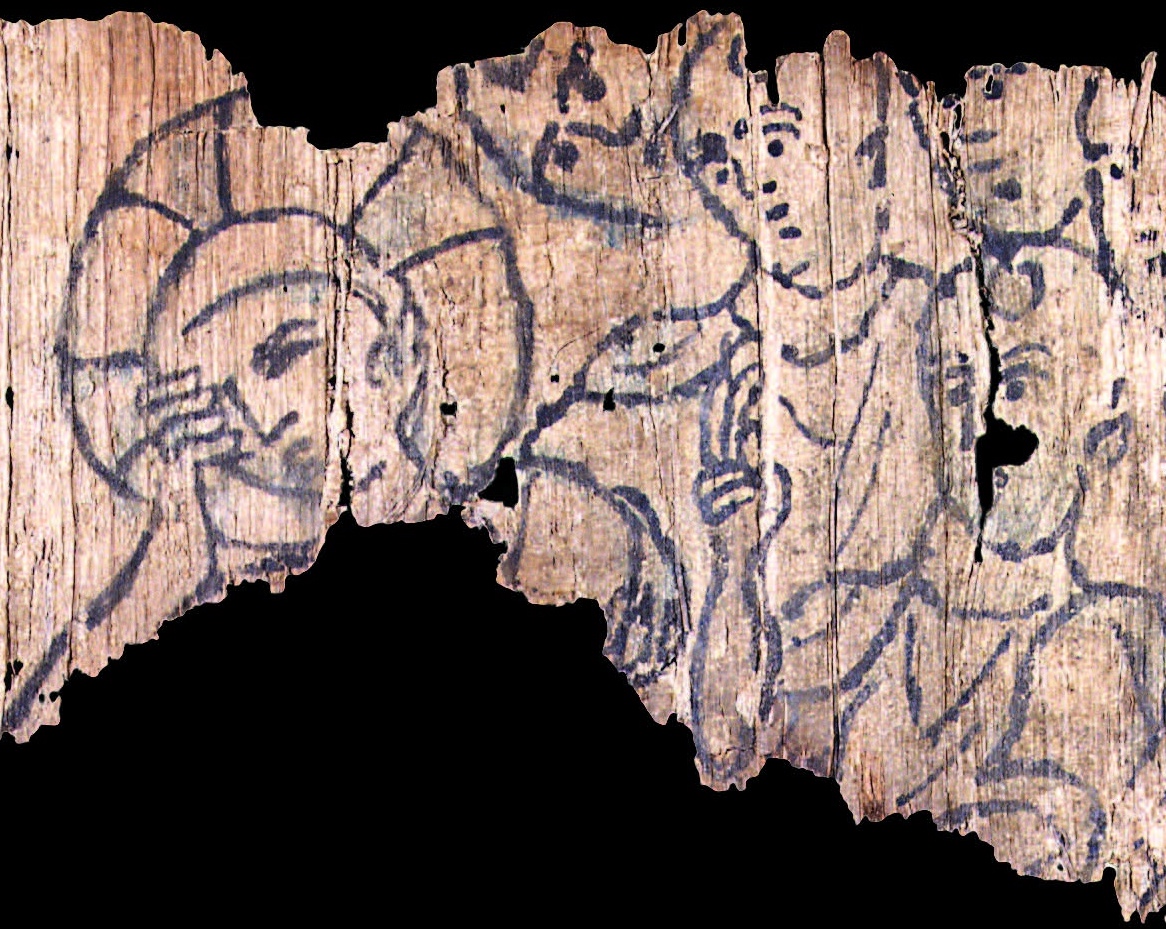 Yeshua, His Mother and Brothers
Yeshua, His Mother and Brothers
To demonstrate how the pieces of the “Four Types of Hearers” complex fit together, we have assembled our paraphrases of the Hebrew reconstructions of the individual segments below. We have also assembled the Greek and Hebrew reconstructions of the entire complex and presented them following the English paraphrase.
English Paraphrase
Later that day large crowds of people gathered and came to Yeshua, and he told them this parable: “A sower went out to sow his seed. As he sowed, some fell on a footpath. First it was trampled, then the birds of the sky ate it. Some fell on rock. At first it sprouted, but then it dried out from want of moisture. Some fell among thistles. At first it sprouted, but then the thistles choked it. And some fell on good soil. It not only sprouted, it even produced grain, so that the sower saw a hundredfold return!
“Whoever has ears to hear, let him hear!”
Yeshua’s disciples approached him and said, “What is the meaning of this parable?”
So Yeshua replied, “The meaning of the parable is this: the seed represents the word of God. The scenario of the seed on the path represents those who hear God’s word but do not accept it, so Satan comes and uproots it from their hearts. The scenario of the seed on the rock represents those who hear God’s word and joyfully accept it, but since they have missed the point they turn away in times of testing. The scenario of the seed among the thistles represents those who hear God’s word and accept it, but worries, possessions and worldly pleasures choke them more and more. The scenario of the seed in the good soil represents those who hear God’s word and accept it with a sincere determination to put it into practice.”
Yeshua was still addressing the crowds when his mother and brothers arrived. They stood outside hoping to speak with him. So Yeshua was told, “Your mother and brothers are standing outside hoping to speak with you.” In response to this Yeshua said, “My mother and brothers are excellent examples of the seed that fell on good soil! They hear the word of God and act accordingly.”
Greek Reconstruction
καὶ ἐγένετο ἐν τῇ ἡμέρᾳ ἐκείνῃ καὶ συνήχθησαν ὄχλοι πολλοὶ καὶ ἐπορεύθησαν πρὸς αὐτόν καὶ εἶπεν αὐτοῖς παραβολὴν λέγων ἐξῆλθεν ὁ σπείρων τοῦ σπείρειν τὸν σπόρον αὐτοῦ καὶ ἐν τῷ σπείρειν αὐτὸν ὃ μὲν ἔπεσεν παρὰ τὴν ὁδὸν καὶ κατεπατήθη καὶ τὰ πετεινὰ τοῦ οὐρανοῦ κατέφαγεν αὐτό καὶ ἕτερον ἔπεσεν ἐπὶ τὴν πέτραν καὶ φυὲν ἐξηράνθη διὰ τὸ μὴ ἔχειν ἰκμάδα καὶ ἕτερον ἔπεσεν ἐν μέσῳ τῶν ἀκανθῶν καὶ φυὲν αἱ ἄκανθαι ἀπέπνιξαν αὐτό καὶ ἕτερον ἔπεσεν εἰς τὴν γῆν τὴν ἀγαθὴν καὶ φυὲν ἐποίησεν καρπὸν καὶ εὗρεν ἑκατονταπλασείονα ὁ ἔχων ὦτα ἀκούειν ἀκουέτω
καὶ προσελθόντες οἱ μαθηταὶ αὐτοῦ εἶπαν αὐτῷ τίς εἴη ἡ παραβολὴ αὕτη καὶ εἶπεν αὐτοῖς αὕτη ἔστιν ἡ παραβολή ὁ σπόρος ἐστὶν ὁ λόγος τοῦ θεοῦ οἱ δὲ παρὰ τὴν ὁδὸν οὗτοί εἰσιν οἱ ἀκούσαντες τὸν λόγον καὶ οὐ δέχονται αὐτόν καὶ ἔρχεται ὁ διάβολος καὶ αἴρει τὸν λόγον ἀπὸ τῆς καρδίας αὐτῶν οἱ δὲ ἐπὶ τῆς πέτρας οὗτοί εἰσιν οἱ ἀκούσαντες τὸν λόγον καὶ δέχονται αὐτὸν μετὰ χαρᾶς καὶ ῥίζαν οὐκ ἔχουσιν καὶ ἐν καιρῷ πειρασμοῦ ἀφίστανται οἱ δὲ εἰς τὰς ἀκάνθας οὗτοί εἰσιν οἱ ἀκούσαντες τὸν λόγον καὶ δέχονται αὐτόν καὶ μέριμναι καὶ πλοῦτος καὶ ἡδοναὶ τοῦ αἰῶνος τούτου πορευόμενοι συνπνείγουσιν αὐτούς οἱ δὲ ἐν τῇ γῇ τῇ καλῇ οὗτοί εἰσιν οἱ ἀκούσαντες τὸν λόγον καὶ δέχονται αὐτὸν ἐν καρδίᾳ ἀγαθῇ
ἔτι αὐτοῦ λαλοῦντος τοῖς ὄχλοις καὶ ἰδοὺ ἡ μήτηρ αὐτοῦ καὶ οἱ ἀδελφοὶ αὐτοῦ εἱστήκεισαν ἔξω ζητοῦντες αὐτῷ λαλῆσαι εἶπαν δὲ αὐτῷ ἰδοὺ ἡ μήτηρ σου καὶ οἱ ἀδελφοί σου ἑστήκασιν ἔξω ζητοῦντές σοι λαλῆσαι ὁ δὲ ἀποκριθεὶς εἶπεν πρὸς αὐτούς μήτηρ μου καὶ ἀδελφοί μου ἰδοὺ οὗτοί εἰσιν οἱ ἀκούοντες τὸν λόγον τοῦ θεοῦ καὶ ποιοῦντες
Hebrew Reconstruction
וַיְהִי בַּיּוֹם הַהוּא וַיֵּאָסְפוּ אֻכְלוּסִים גְּדוֹלִים וַיֵּלְכוּ אֵלָיו וַיִּמְשׁוֹל לָהֶם מָשָׁל לֵאמֹר יָצָא הַזּוֹרֵעַ לִזְרוֹעַ אֶת זַרְעוֹ וּבִזְרִיעָתוֹ זֶה נָפַל עַל הַדֶּרֶךְ וְנִדְרַךְ וְעוֹף הַשָּׁמַיִם אָכְלוּ אוֹתוֹ וְאַחֵר נָפַל עַל הַסֶּלַע וְעָלָה וְיָבֵשׁ מֵאֵין לֵחָה וְאַחֵר נָפַל בֵּין הַחוֹחִים וְעָלָה וְהַחוֹחִים חָנְקוּ אוֹתוֹ וְאַחֵר נָפַל בָּאֲדָמָה הַטּוֹבָה וְעָלָה וְעָשָׂה פְּרִי וּמָצָא מֵאָה שְׁעָרִים מִי שֶׁיֵּשׁ לוֹ אָזְנַיִם לִשְׁמוֹעַ יִשְׁמַע
וַיִּקְרְבוּ תַּלְמִידָיו וַיֹּאמְרוּ לוֹ מַה הוּא הַמָּשָׁל הַזֶּה וַיֹֹּאמֶר לָהֶם זֶה הוּא הַמָּשָׁל הַזֶּרַע זֶה דְּבַר אֱלֹהִים וְהֵם עַל הַדֶּרֶךְ אֵלּוּ הַשּׁוֹמְעִים אֶת הַדָּבָר וְאֵינָם מְקַבְּלִים אוֹתוֹ וּבָא הַשָּׂטָן וְעוֹקֵר אֶת הַדָּבָר מִלִּבָּם וְהֵם עַל הַסֶּלַע אֵלּוּ הַשּׁוֹמְעִים אֶת הַדָּבָר וּמְקַבְּלִים אוֹתוֹ בְּשִׂמְחָה וְעִקָּר אֵין לָהֶם וּבִשְׁעַת נִסָּיוֹן הֵם סָרִים וְהֵם בַּחוֹחִים אֵלּוּ הַשּׁוֹמְעִים אֶת הַדָּבָר וּמְקַבְּלִים אוֹתוֹ וְהִרְהוּרִים וְהוֹן וְתַעֲנוּגֵי הָעוֹלָם הַזֶּה הוֹלְכִים וְחוֹנְקִים אוֹתָם וְהֵם בָּאֲדָמָה הַטּוֹבָה אֵלּוּ הַשּׁוֹמְעִים אֶת הַדָּבָר וּמְקַבְּלִים אוֹתוֹ בְּלֵב טוֹב
עוֹדֶנּוּ מְדַבֵּר עִם הָאֻכְלוּסִים וְהִנֵּה אִמּוֹ וְאֶחָיו עוֹמְדִים בַּחוּץ מְבַקְּשִׁים לְדַבֵּר עִמּוֹ וַיֹּאמְרוּ לוֹ הֲרֵי אִמְּךָ וְאַחֶיךָ עוֹמְדִים בַּחוּץ מְבַקְּשִׁים לְדַבֵּר עִמְּךָ וַיַּעַן וַיֹּאמֶר לָהֶם אִמִּי וְאַחַי הֲרֵי אֵלּוּ הַשּׁוֹמְעִים אֶת דְּבַר אֱלֹהִים וְעוֹשִׂים
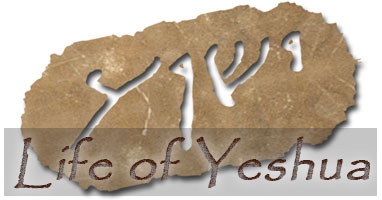 Click here to return to The Life of Yeshua: A Suggested Reconstruction main page.
_______________________________________________________
Click here to return to The Life of Yeshua: A Suggested Reconstruction main page.
_______________________________________________________
- [1] See Lindsey, JRL, 214. For abbreviations and bibliographical references, see “Introduction to ‘The Life of Yeshua: A Suggested Reconstruction.’” ↩
- [2] See Robert L. Lindsey, “Jesus’ Twin Parables.” ↩
- [3] See, for example, the “Cost of Entering the Kingdom of Heaven” complex and the complexes entitled “Yeshua and Levi the Toll Collector” and “Yohanan the Immerser and the Kingdom of Heaven.” ↩
- [4] The Gospels of Luke and Matthew agree that the Houses on Rock and Sand parable addresses disciples who vainly claim Jesus as their Lord but who do not follow Jesus’ teachings. But whereas Houses on Rock and Sand polemicizes against an incipient personality cult that attempts to circumvent the hard task of obedience to Jesus’ teachings with flattering Jesus’ ego, the Four Soils parable does not have a polemical tone, nor is it addressed solely to disciples who call him “Lord.” The Four Soils parable is addressed to everyone who listens to the word of God. The point of the Four Soils parable is that merely listening to Torah is a waste of time unless what is heard is put into practice. The lesson of the Four Soils parable is not exclusively for full-time disciples committed to practicing Jesus’ distinctive halachah; it is suitable for a wider audience of observant first-century Jews. ↩
- [5] See “LOY Excursus: Criteria for Identifying Separated Twin Parables and Similes in the Synoptic Gospels.” ↩
- [6] According to the Talmud, some rabbinic sages would open their discourses with humorous sayings before delving into halachic matters so as to soften up their listeners (b. Pes. 117a). Jesus’ opening a public address with the Four Soils parable is similar. ↩
- [7] See Mysteries of the Kingdom of Heaven, under the subheading “Story Placement.” ↩


